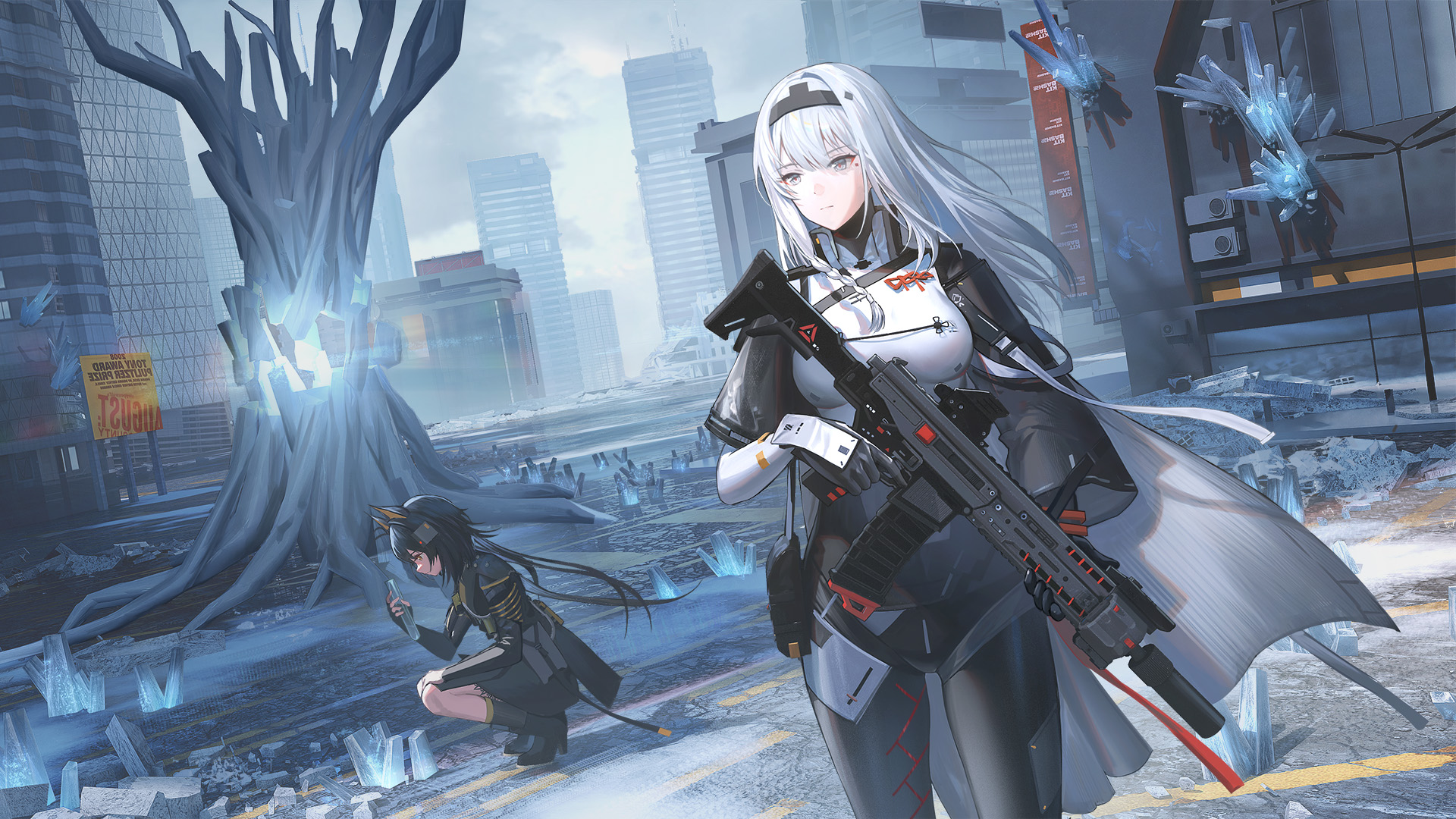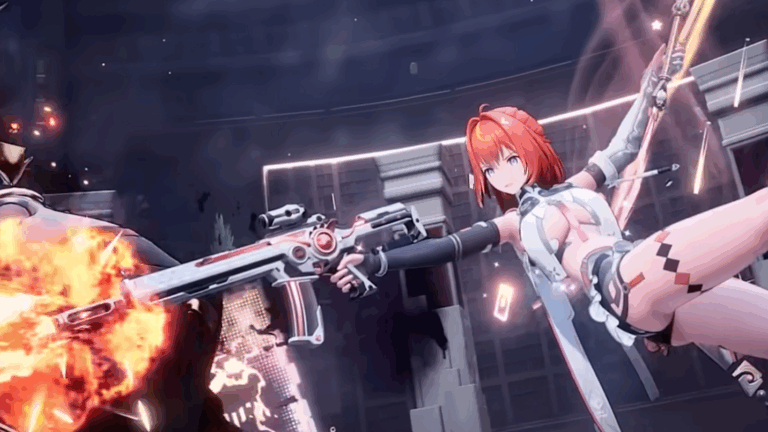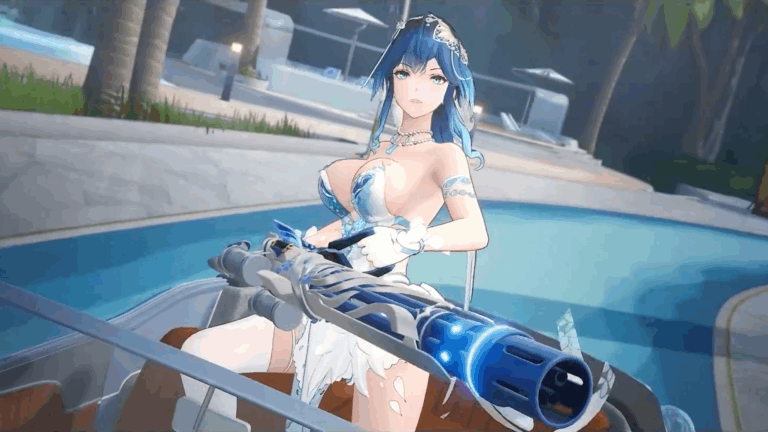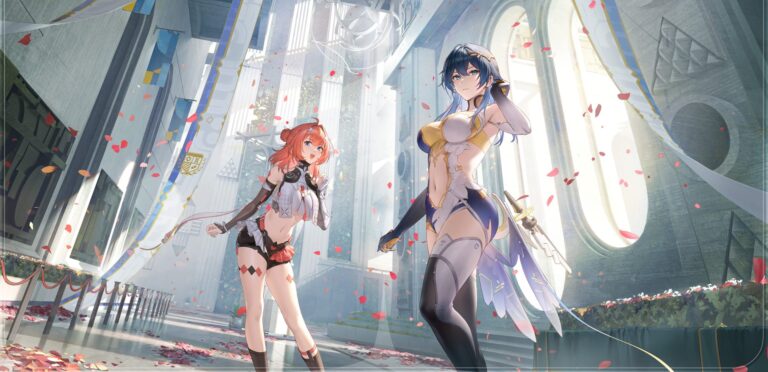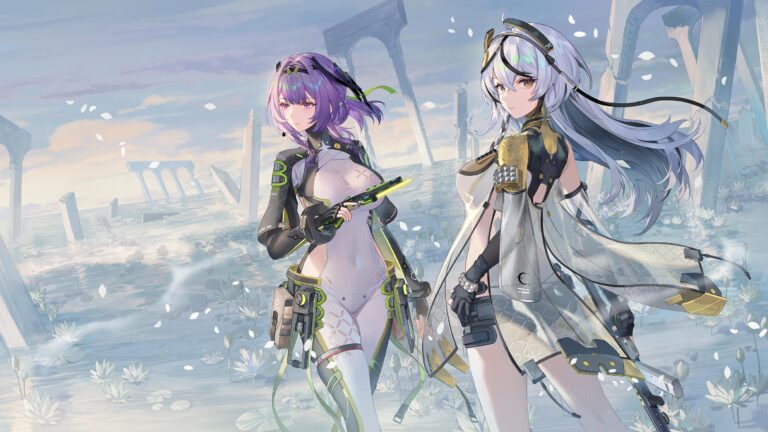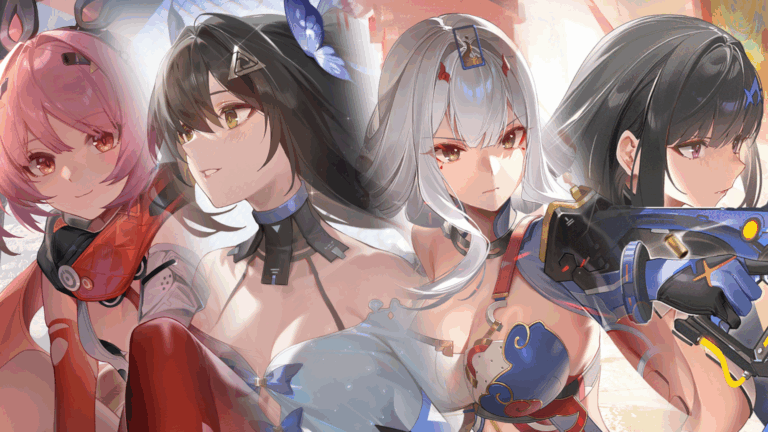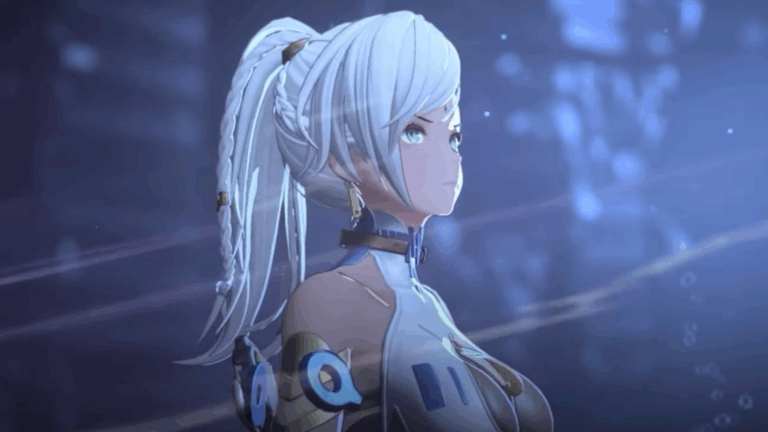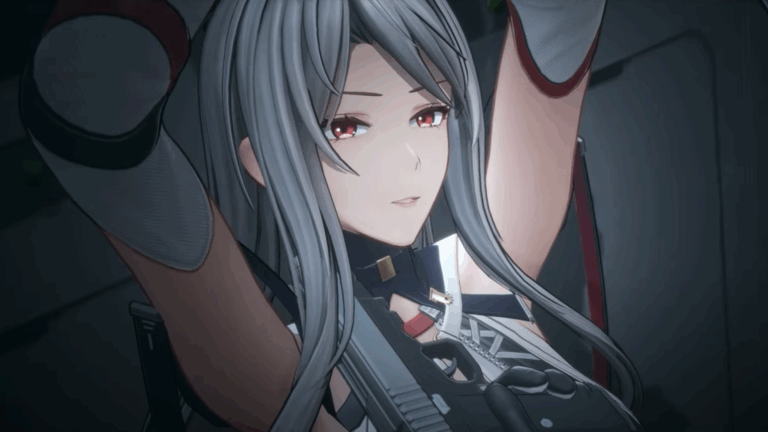Table of Contents
Team building is an important skill to have in many games, and Snowbreak is no exception. A well-made team can make the difference between an impossible fight and an easy victory. So then, let's take a look at how you can max out your operative synergy to take down any enemy in your way, because it's not like you're learning anything from reading this intro paragraph.
One Plus Two
The standard team composition that you'll be using for the vast majority of content, if not the entire game, is that of one DPS operative and two supports. Supports can be anything from damage buffers to parts break specialists to healers, while the DPS is responsible for doing damage as you'd expect.
For an in-depth explanation on why this team composition is recommended, see the extra reading at the bottom of this guide.
Main DPS
This is your main (and usually only) damage dealer. DPS operatives come in three flavors: ballistic, skill, and hybrid. Which type you choose often doesn’t matter too much (though it is good to have a mix of damage types in case you need a specific one), but it will affect what supports you’ll want to use with them.
As is the case with many games, the continuous release of new DPS operatives has gradually made older ones less comparatively competitive, and this is indicated. However, most DPS operatives are still perfectly capable of handling combat even if they end up doing it less quickly than meta picks.
Ballistic
Ballistic DPS operatives primarily deal damage by firing their weapon, and mainly deal ballistic damage as a result.

Fenny - Lionheart
Uses her standard skill to close the gap to enemies and reload her weapon, enhancing her next shot after.
Generally not competitive with modern DPS releases.
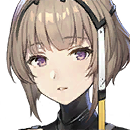
Marian - Queen of Pain
Has buffed ADS shots and can spam her ultimate skill against enemies.
Generally not competitive with modern DPS releases.
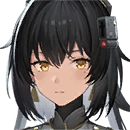
Mauxir - Meow
Pulls a "soul" out of enemies that can be shot at to directly deal damage to them.
Generally not competitive with modern DPS releases.
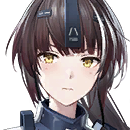
Haru - The Ace
Has a gun.
Generally not competitive with modern DPS releases.
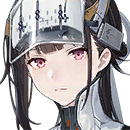
Yao - Winter Solstice
Rapidly fires by using her standard skill to reset her attack animation, and wants to have her ultimate skill active to deal increased damage. To get top performance out of her, put her with Mauxir - Shadow Ka and Tess - The Magician whenever possible.
Generally not competitive with modern DPS releases.
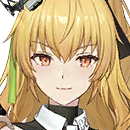
Fenny - Coronet
Increases her rate of fire based on a resource that she generates by shooting enemies. A very strong DPS pick thanks to the existence of Fenny - Starshine, who can keep her ammo topped up.
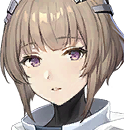
Marian - Swift
Locks onto enemies and alternates between hipfire shots and skill casts. Can be especially effective against mobile bosses due to her ability to lock onto her target.
Generally not competitive with modern DPS releases.

Katya - Blue Bolt
Enters a stationary stance to rapidly increase her fire rate, and has an alternate firing mode with explosive shots. Benefits from never having to reload but also can have issues tracking more mobile bosses given that her crossbow projectiles are not hitscan.
Generally not competitive with modern DPS releases.
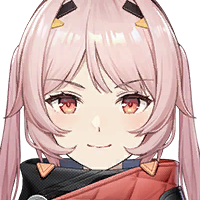
Fritia - Turbo
Runs to generate stacks that can be used by her standard skill to fire auto-targeting shots with increased damage. Unfortunately suffers from long periods of damage downtime.
Generally not competitive with modern DPS releases except against Iron Ouroboros.
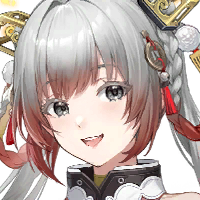
Bubu - The Geomancer
Rapid-firing ballistic DPS with guaranteed critical hits. Can suffer in long fights from running out of S-Energy and no longer having access to her ultimate.
Skill
Skill DPS operatives do damage by using their standard or ultimate skills. While they may still have to shoot with their weapon to be able to do damage, the main portion of the damage they do is still with their skills, which is classified as skill damage.
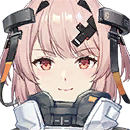
Fritia - Hush
Consumes U-Energy to continuously fire a laser with her ultimate skill.
Generally not competitive with modern DPS releases.
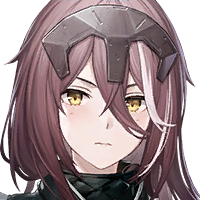
Haru - Absconditus
Repeatedly casts her standard skill to deal AoE damage that refunds charges on enemy kills, and can use her ultimate skill to increase damage dealt.
Generally not competitive with modern DPS releases except against Fiend when equipped with Star Ocean.
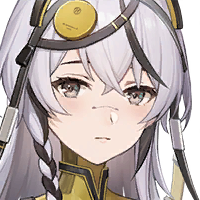
Cherno - Enigma
Applies DoT stacks to enemies that can be detonated to deal massive damage.
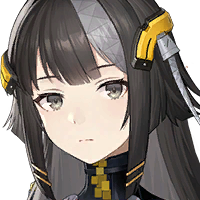
Siris - Ksana
Uses her standard skill to charge at enemies and deal AoE damage while also building resources to increase the damage of her ultimate skill.
The mandatory charge-up time to generate resources for her ultimate skill can reduce her competitiveness against modern DPS releases.
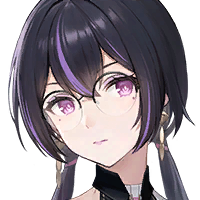
Vidya - Agave
Repeatedly casts her standard skill to deal damage to enemies while also building resources to increase the damage of her ultimate skill.
Generally not competitive with modern DPS releases outside of her designated pandering boss, Nightborne Phantom.
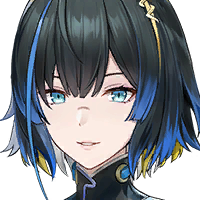
Katya - Dawnwing
Uses her standard skill to place turrets that fire at enemies when charged up, dealing large burst damage.
Hybrid
These operatives do a balanced mix of both ballistic and skill damage, or have their damage treated as both types. This makes them much more flexible when it comes to team building, as they can take advantage of supports designed for ballistic DPS operatives as well as those designed for skill DPS operatives. This can come at the cost of reducing the maximum effectiveness of a support, but this generally has not been a major issue so far.

Lyfe - Wild Hunt
Shoots enemies to replenish resources for her continuously firing standard skill.
Generally not competitive with modern DPS releases.
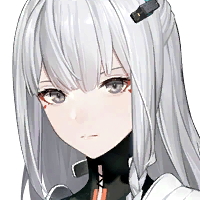
Chenxing - Ethereal Cloud
Applies marks to enemies that inflict additional damage when any marked enemy is shot.
Generally not competitive with modern DPS releases except against bosses with multiple parts that she can lock onto with her standard skill (Hela, Cerberus, etc.).
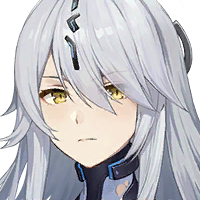
Lyfe - Infinite Sight
Marks enemies with her standard skill to deal extra damage with her "dodge shot," which is charged by shooting enemies.
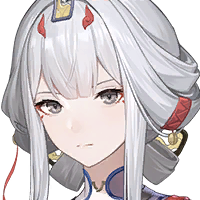
Chenxing - Jade Arc
Uses her standard skill and normal shots to embed arrows in enemies that are pulled out with her ultimate to deal damage.
Supports
Behind every great DPS are two hard-working supports. These operatives are sometimes under-appreciated, but the impact they can have is nothing short of game-changing.
Generalists
These supports work well with both ballistic and skill DPS. This gives them excellent versatility, but can suffer from not being able to provide the same amount of impact as a more specialised support.

Lyfe - Wild Hunt
Can buff the main DPS thanks to her support skill's DoT effect's synergy with Amarna Squad logistics.

Acacia - Kaguya
Reduces enemies' resistances to all types of elemental damage.
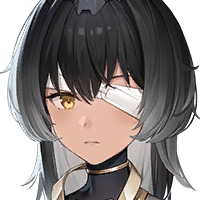
Mauxir - Shadow Ka
Spawns a target that amplifies and transfers any damage done to the target to the linked enemy, as well as providing increased crit rate when shooting the target.

Tess - The Magician
Generates U-Energy and provides damage buffs that are amplified when the active operative also uses their ultimate skill.

Eatchel - The Cub
Passively heals allies and buffs attack based on the healed amount.
Ballistic/Skill
As the name suggests, these supports specialise in supporting either ballistic or skill damage operatives.
Ballistic
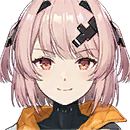
Fritia - Little Sunshine
Provides a buff that deals additional damage on each shot, which can be used to proc logistics sets like Twilight and Amarna.
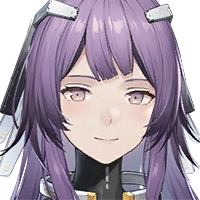
Enya - Big Sis
Attaches an explosive to an enemy that amplifies the damage of the next shot that hits them.

Siris - The Goldfish
Deploys a shield that allows shots fired through it to deal additional damage.
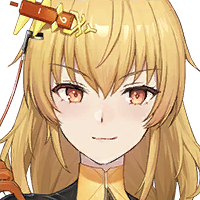
Fenny - Starshine
Provides extra ammo that deals extra damage when fired.
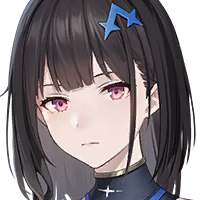
Yao - Nightglow
Marks enemies to take extra ballistic and critical hit damage.
Skill

Chenxing - The Observer
Deploys a turret that heals the active operative and buffs skill damage.
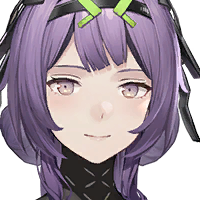
Enya - Exuvia
Spawns a zone that buffs skill damage and provides CC immunity, with a drone that deals damage to enemies which can proc logistics sets like Twilight and Amarna.
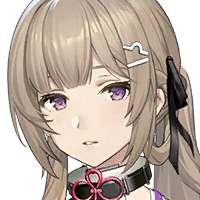
Marian - Riptide
Passively buffs the active operative's skill damage.
Control
Often called “CC supports” (for Crowd Control), these operatives can apply helpful debuffs on enemies to prevent them from acting. They usually also can boost your damage by using the Navigator Squad logistics set.

Lyfe - Wednesday
Applies Paralyze to an enemy.
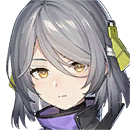
Acacia - Redacted
Throws a dagger that applies Slow to enemies from range.

Cherno - Those Two
Turns into a ghosted state and applies Slow when passing through enemies.
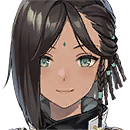
Nita - Hands
Can knock up and stun enemies with her skills.
Healers
Surely you know what a healer is, right? These operatives are popular with new and casual players, but it’s recommended to only use them when absolutely needed, as bringing an extra damage support will usually be more beneficial. After all, a dead enemy can’t fight back!

Chenxing - The Observer
Deploys a turret that heals the active operative and buffs skill damage.
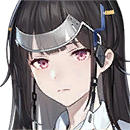
Yao - Quiet Quitter
Spawns a drone that heals the active operative.

Eatchel - The Cub
Passively heals allies and buffs attack based on the healed amount.
Parts Breakers
These operatives specialize in breaking parts, identifiable by their health bar which is yellow instead of the usual red. This is pretty situational, so you usually bring someone along for this purpose only when needed.

Shotgun Operatives
Shotguns as a weapon type are effective at breaking parts, making all shotgun operatives viable for the role.

Vidya - Agave
Skill casts deal bonus damage to breakable parts.
Putting It All Together
Now that you know the various types of operatives and how they’re used, it’s time for you to make your own team. It’s a simple step-by-step process:
- Pick your DPS.
- Bring in two supports, either generalist or skill/ballistic supports depending on what kind of DPS you’re using. Don’t be afraid to try stuff out and see what works!
- If the mission or enemy requires you to break parts, replace one of your supports with a parts breaker.
- If you really are struggling, consider bringing a control support to give yourself extra safety. If that's not enough, then it might be time to bring in a healer. But don’t make it the first thing you reach for, though. Challenge yourself to find a team composition or strategy that will let you defeat the enemy without needing extra healing.
For example, let's say you choose Katya - Dawnwing as your main DPS.

The specific boss you want to fight has no special mechanics that require a part breaker, and you're confident in your abilities and will not be needing healing. You would then look at general and skill support options due to Katya being a skill DPS. Keep in mind that there is no specific requirement to include a certain amount of each type of support (though individual support strength and synergy may impact your decision).
| General Supports | Skill Supports |
|---|---|
     |    |
Having looked at your options, you decide to bring along Enya - Exuvia for her strong support skill buffs, and Mauxir - Shadow Ka to provide a stationary target for you to shoot and charge your Crystal Vanes with, while also having your damage amplified. Congratulations, you just built a team!
But just because certain operatives work on paper, it doesn't mean that they will mesh perfectly. In your case, you'll have to be careful to stay inside of Enya's support skill area in order to benefit from her buffs, as Katya moves around quite a bit when setting up her Crystal Vanes. However, this is very doable as long as you keep it in mind or recast Enya's support skill to reposition it to your current location. Remember to read how each operative works!
That’s the basics of team building, and it should be more than enough for you to tackle most if not all of the content the game has to offer.
However, if you're looking for more in-depth information to help with team building against more difficult enemies like Neural Simulation bosses, continue on to the Advanced Team Building Guide.
Why One DPS?
This is a common question, so it's worth explaining. There are two main reasons for why this team setup is recommended:
Funneling one DPS is more effective
If you think about it, it should be pretty obvious: using one DPS that gets double buffed by supports is better for damage than using two different DPS operatives that each only get buffed by one support. Let's make this more clear with some basic math. Suppose DPS operatives deal 1 damage every ten seconds, and adding in a support increases the damage they can do by an extra 1. In a two-DPS-one-support team where you presumably take turns using each DPS, the damage you do in 40 seconds is:

Now take a single DPS being buffed by two supports. The DPS still does 1 damage every ten seconds, and each support still increases the damage by 1. Over the same 40 seconds, the amount of damage this team does is:

Which is pretty clearly more than the amount of damage you were doing with the other team. This is of course very much an oversimplification and doesn’t take into account things like support uptime, but the underlying logic remains. Of course, if characters other than the main DPS could also directly deal damage, it might be a different story. But that gets into the other point:
Operatives are too good at their roles
In other games like Wuthering Waves or Genshin Impact, all the members of a party get at least some screen time as they rotate on-field. Sub-DPS units get a few hits in while buffing the main DPS as they leave, and the support typically provides heals and supportive buffs that require them to be on-field in the process. This is not the case in Snowbreak.
The concept of a sub-DPS does not serve a meaningful role in the vast majority of content in Snowbreak. This is because modern main DPS operatives are able to endlessly repeat their damage rotations with little to no penalty, thanks to short cooldowns and negligible resource costs. There are also no windows for them to be swapped out as they are required to stay on-field even during their damage downtime to set up their next damage rotation, which they are not able to do when off-field. For example, Katya - Dawnwing has to use her standard skill to replenish her Crystal Vanes, and Lyfe - Infinite Sight has to shoot enemies to charge up her dodge shot.
As for the buffing aspect that sub-DPS characters are expected to provide, we can look at the two attempts to create a character that fills the sub-DPS archetype at the time of writing, Enya - Exuvia and Marian - Riptide. Neither are required to be on field for extended periods of time if at all to provide their damage buffs, and their damage contribution is not large enough to be worth optimizing for when it’s more effective to instead focus on using them to increase the main DPS operative’s damage. When combined with the previously mentioned need for main DPS operatives to permanently stay on-field to do damage, sub-DPS operatives instead only get used for their support value in the vast majority of use cases.
Finally, we get to supports. As in any game, you want these characters to be taking up as little time as possible so you can spend more time actually doing damage. However, Snowbreak takes this to the logical extreme as supports typically exist to permanently sit on the bench and only use their support skills (if at all). Healers either passively provide healing while off-field or spawn stand-ins to provide healing so the main DPS can be on-field as much as possible. Even the few supports that get to use their ults immediately swap out so as to not interrupt the main DPS. As the final nail in the coffin, supports overwhelmingly have standard skills that provide limited utility or are even designed to allow them to do damage. But a support will never provide the levels of damage that a main DPS can, so there is once again no reason for them to exist on-field.
So to sum everything up, main DPS operatives demand almost full on-screen time, but reward this by being extremely good at doing damage if you grant them this. This crowds out sub-DPS operatives, who are reclassified as pure supports as a result. The aforementioned support archetype is extremely good at buffing main DPS operatives, while also disrupting the main DPS as little as possible. The result is that main DPS operatives will want to be on-field as much as possible, and supports are happy to stay out of their way. With an arrangement like this, it should then be unsurprising that the standard team composition is one DPS and two supports.

